Search engines have shifted their focus from keywords to topics due to changes in user search behavior. As a result, SEOs now strive to dominate topics rather than just keywords to compete in the competitive search landscape.
In this post, I'll guide you through the exciting world of topic-based content and walk through how to create keyword clusters for SEO. By mastering this method, you'll establish authority in your industry which, in turn, improves search visibility for your website.
Let's dive in!
Table of Contents
- The Importance of Creating Topic Clusters for SEO
- How seoClarity Makes Creating Topic Clusters Simple
What Are SEO Topic Clusters?
Topic clustering for SEO is a strategic approach that involves organizing related content around a central theme or main subject, known as a "pillar" topic.
This method is based on creating a pillar page that broadly covers a topic and linking it to multiple related but more specific content pieces, referred to as "cluster" pages which are also all interlinked together.
The goal of this method is to create a more logical site architecture as well as effectively boost the site's authority, and in turn, rankings
The Structure of Topic Clusters
Typically, information on a site is organized using a hierarchical model. A home page sits on top, followed by different layers of content that lead site visitors and potential buyers deeper into the structure.
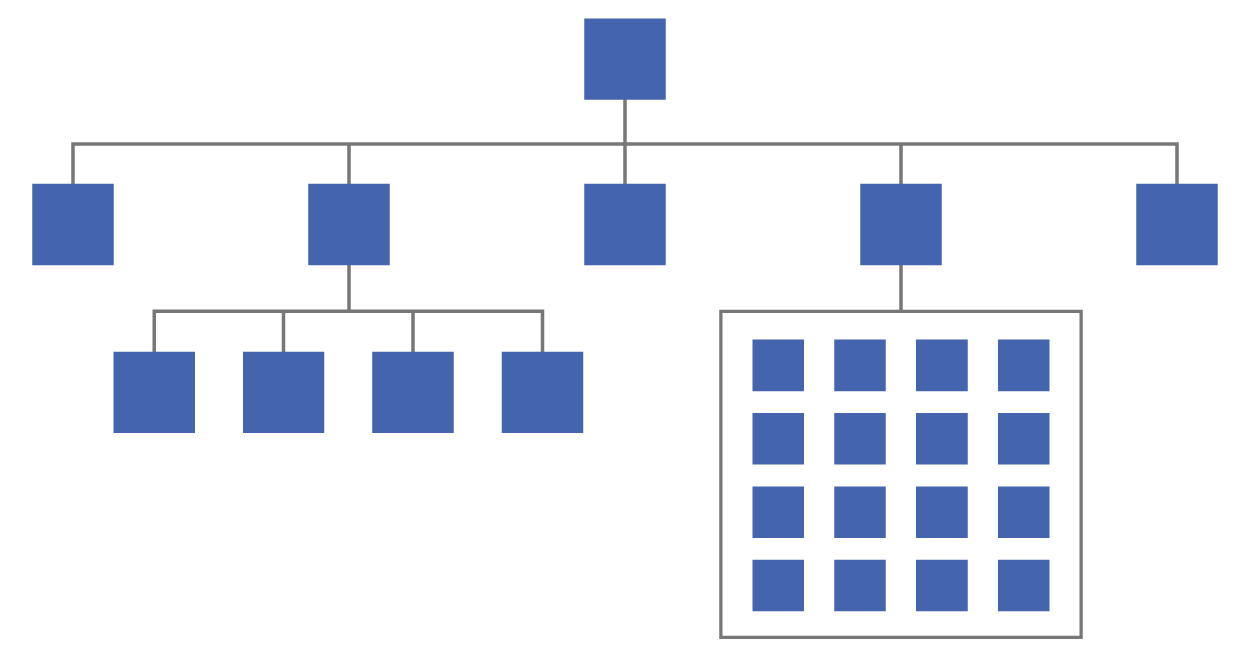
This structure misses out on one important factor - connecting related content. For example, your blog posts might reside at the same level but may never be interlinked despite them covering the same topic.
Topic clusters change that approach.
When creating a topic cluster, you collect all relevant content around a pillar page that, as HubSpot puts it:
[...] definitively -- yet broadly -- outlines the topic.
In practice, it looks something like this:

(Clustered content is connected with internal links and a pillar page.)
Each cluster page linking to the pillar page should cover a single aspect of the content mentioned on the pillar page in good detail. Typically, these subtopics will focus on long-tail keywords.
Let’s take “link building” as an example topic.
The pillar page would contain broad information about the whole concept of building links and mention various ideas around it. Cluster pages, however, would expand each of those subtopics into a full-blown piece of content. For example:
- Link building strategies
- How to measure links strength
- Link building management
- Link-worthy content types
Since each of those assets relates to the topic of link building, it makes sense to internally link them together and back to the pillar page.
The Importance of Creating Topic Clusters for SEO
Topic clustering is crucial for SEO for several key reasons, all of which revolve around improving site structure, enhancing content relevance, and ultimately boosting search engine rankings.
Here’s why it’s important:
-
Enhances Topic Authority: By grouping related content under a central pillar, you signal to search engines that your site is a comprehensive source on a particular topic. This helps establish your site as an authority, which can improve your rankings for various queries related to the topic.
-
Improves Site Architecture: Topic clustering contributes to a cleaner and more organized website structure. This organization makes it easier for search engines to crawl and index your site, which is critical for improving visibility in search results.
-
Boosts User Experience: For visitors, a well-organized site with clustered topics means they can navigate easily to related content. This not only enhances the user experience but also increases the time spent on the site and decreases bounce rates, both of which are positive signals to search engines.
-
Increases Page Relevance: Clustering allows you to target specific keywords and variations within a broader topic. This specificity increases the relevance of each cluster page to particular search queries, which can lead to better rankings for those targeted keywords.
Let's go over some of the main events that lead to the increased importance of topic clustering.
Take a look at any of Google’s algorithm updates over the last decade, and you’ll see: the search engine is focused on improved understanding of queries users type into the search box.
In 2013, the Hummingbird update allowed the search engine to process semantic keywords. This allowed it to provide results for what it deemed "conversational search" and better understand the words in the search query.
Two years later, we learned about RankBrain. This machine learning artificial intelligence helped Google sort through and learn from search results to serve better answers to queries it had never heard before.
Then came the launch of the mobile-first index, once again taking into consideration a modern user’s behavior.
In the past, searching used to be all about keywords. It didn’t matter what information you needed to find - an auto repair shop to fix your car, new running shoes to buy, or information about a historical fact - you used short and highly-defined phrases to get to your answers. You may have searched for “best tire shop,” “running shoes” or “battle of Waterloo.”
Today, however, we've swapped those keywords for very intentional questions.
We ask Google “where to fix a flat tire?” or “what are the best running shoes for a beginner?” We also pose complex questions or give scraps of information, expecting the search engine to process them, and still give us the information we seek.
And, not surprisingly - it works!
Take a look at this example:
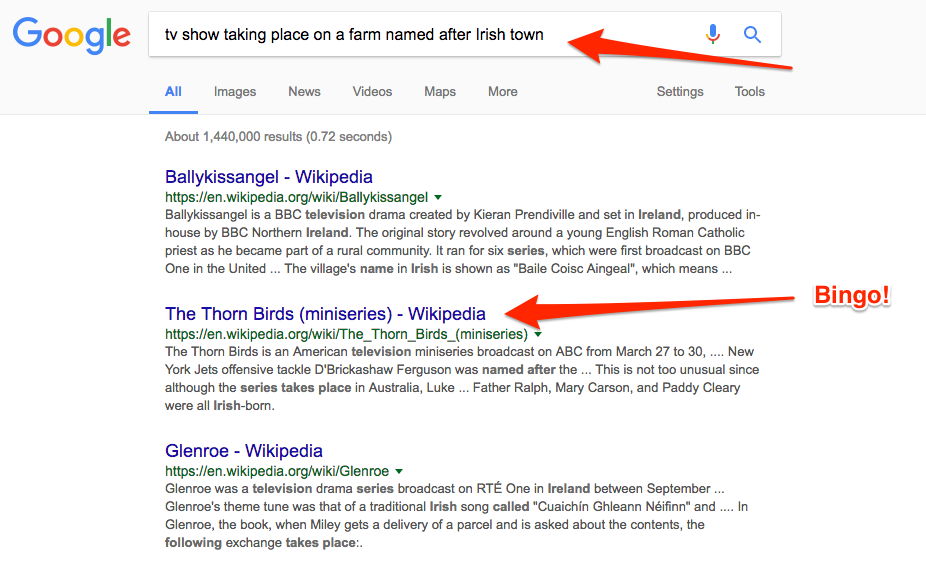
Google evolved its algorithm to be able to understand the context and intent behind the search query, matching it with available information to provide the most relevant search results. Thus, the next logical step was organizing information into topics that match the search query.
Recommended Reading: How to Achieve Keyword Research Success in 2024
Choosing Which Topic Clusters to Create
You already know the structure of a topic cluster. The biggest question that remains is figuring out what topics to create topic clusters around.
The simplest answer is this: create topic clusters on whatever your audience constantly seeks more information about.
Let me show you two approaches that will help you identify that without any guesswork.
Strategy #1: Identifying Content Gaps
The term “content gap” describes keywords or topics that your competitor ranks for which you don't. This offers quick insight into opportunities to optimize or create content based on what your competitors have visibility on and you do not. From there, you can understand the traffic potential for those opportunities to decide what to prioritize.
To identify the content gap, seoClarity offers a tool dedicated Content Gaps that generates your content strategy in one-click.
Just take a look at the content gap between these domains:
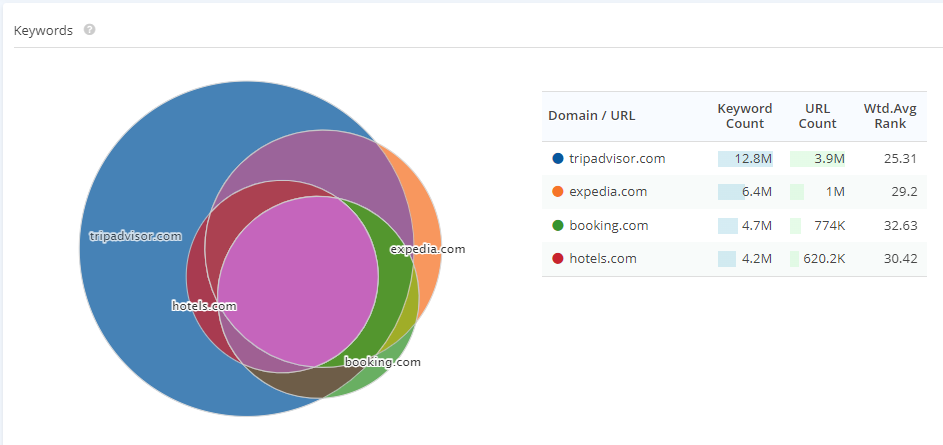
Strategy #2: Researching Your Audience’s Most Common Questions
This strategy works particularly well for identifying individual cluster assets, apart from the pillar content. Because you see, questions your target audience asks in various places online suggest what individual cluster pages you should create.
You can identify those questions in a few ways. You could do it manually, by researching sites like Quora, Yahoo Answer and many others. Alternatively, seoClarity's Content Ideas automates this process and delivers insights from a plethora of sources.
Just take a look at this list of questions associated with the topic “link building:”
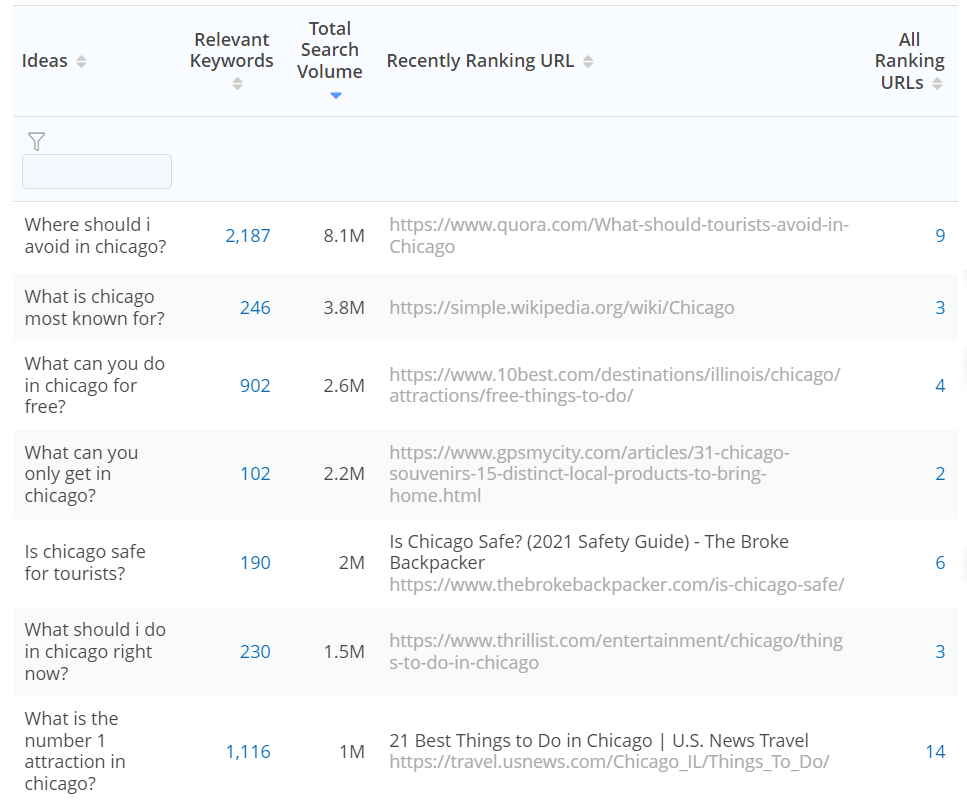
How to Create Topic Clusters Using seoClarity
Now that you know which topics to focus on, it's time to create the topic clusters around them.
seoClarity simplifies the process of finding related topic ideas with Topic Explorer which allows you to quickly understand what topics to prioritize and create content around.
Let's look at the example of "unique gifts" in Topic Explorer.
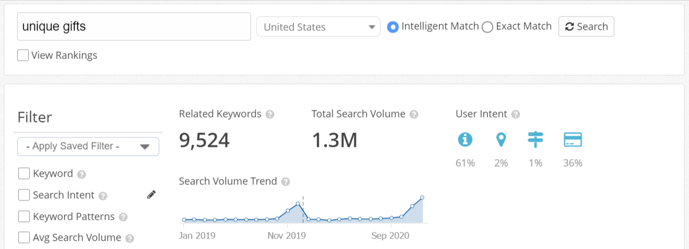
We immediately see the summary of search volume based on terms related to "unique gifts" — this is a gold mine for content strategy and inbound marketing efforts!
Our Topic Clustering capability then automates the process of grouping keywords by similar intent. It does this by directly taking into account how Google sees the semantic relationship of the terms to ensure relevance and increase ranking opportunities.
This means content strategies based on the clusters it produces are more likely to generate traffic.
.png?width=700&height=356&name=Screenshot%204-18-2024%20at%2013.32%20(1).png)
Recommended Reading: Incorporating Keyword Clustering Into Your Content Strategy
Since we've integrated our AI-powered SEO assistant, Sia, into Topic Explorer, users also have the ability to automatically surface alternative keywords that are related to the term entered.

This information helps determine if the concept you searched for is the right starting point for your research (or if you missed out on another important term) before you dive into developing topic clusters around it.
To identify additional topic opportunities to build clusters around, Sia also explores the entire clickstream dataset to create a list of additional topic areas that the audience for your keyword would likely be interested in.
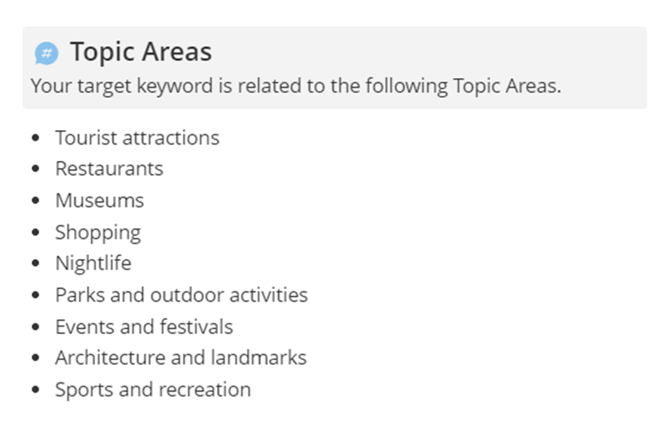
Plus, Sia also provides insight into the entire search journey for a given keyword which helps you see your target audience's search journey for before and after they search for a keyword. This information can be used to guide your topic clustering efforts even further.
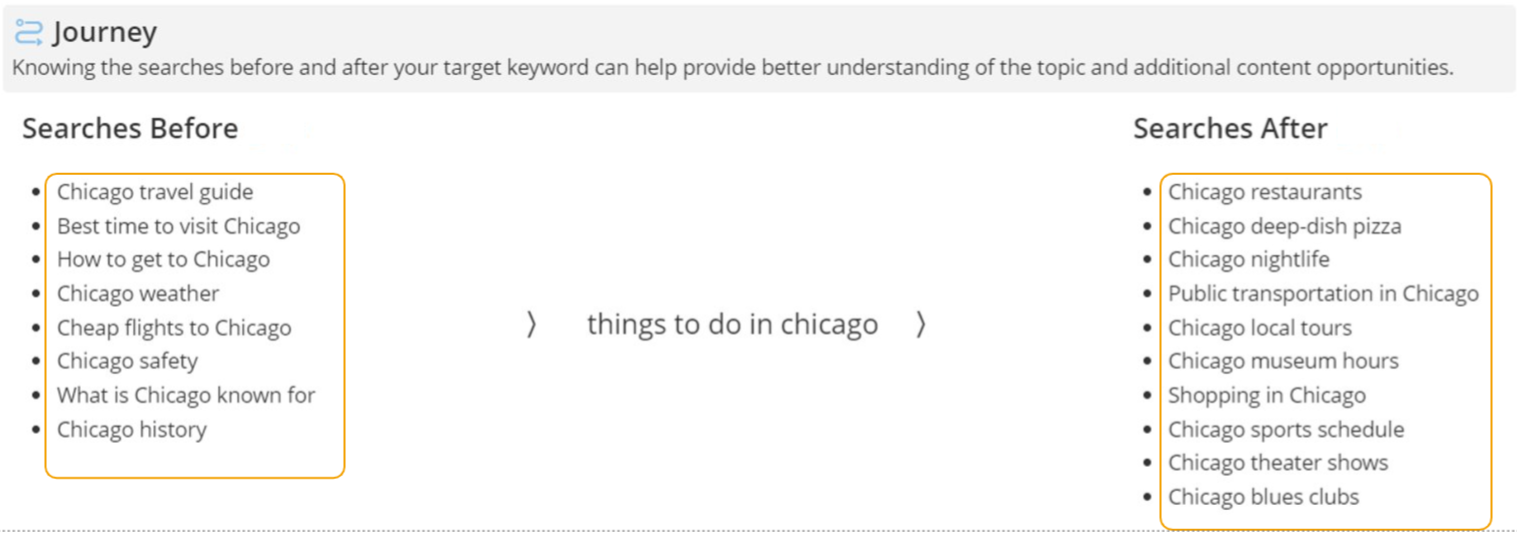
Recommended Reading: Scale and Expand Topic Research with Topic Explorer
Watch how Sia uncovers deeper keyword insights in Topic Explorer
Closing Thoughts
Search engines are shifting their focus to topics. And this, in turn, changes how SEOs must think about online visibility and their content marketing strategy.
It’s no longer about dominating keywords, but instead about gaining authority over entire topics.
After reading this post, you should have a good idea about how to utilize topic-based content for SEO, and understand how to develop topic clusters as part of a content strategy aimed at boosting your overall search visibility.
Editor's Note: This post was originally published in November 2017 and has been updated to reflect upgrades in our platform and technology.







3 Comments
Click here to read/write comments